Today, we had the pleasure of welcoming BCIT Forest Resources faculty, Julia Alards-Tomalin for a Buds, Branches, & Bark Walk. Julia, along with her students, have been doing groundbreaking work with identify native plants in Winter. The third edition of their work, Buds, Branches & Bark, is available free online. This work recently won the Open Pedagogy Award in the 2023 Global Open Education Awards for Excellence.
After several days of snow and freezing rain, we had a bit of a break in the weather just in time for the walk. 19 participants gathered beside the Douglas Fir Teaching Garden on the Red Alder Trail.
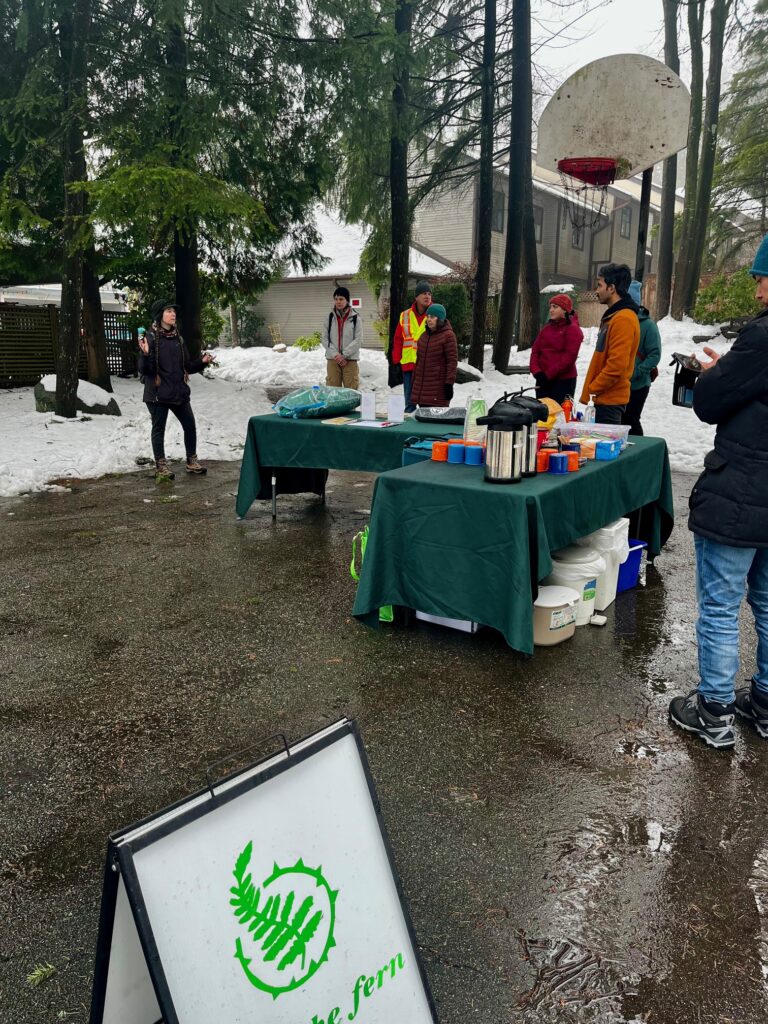
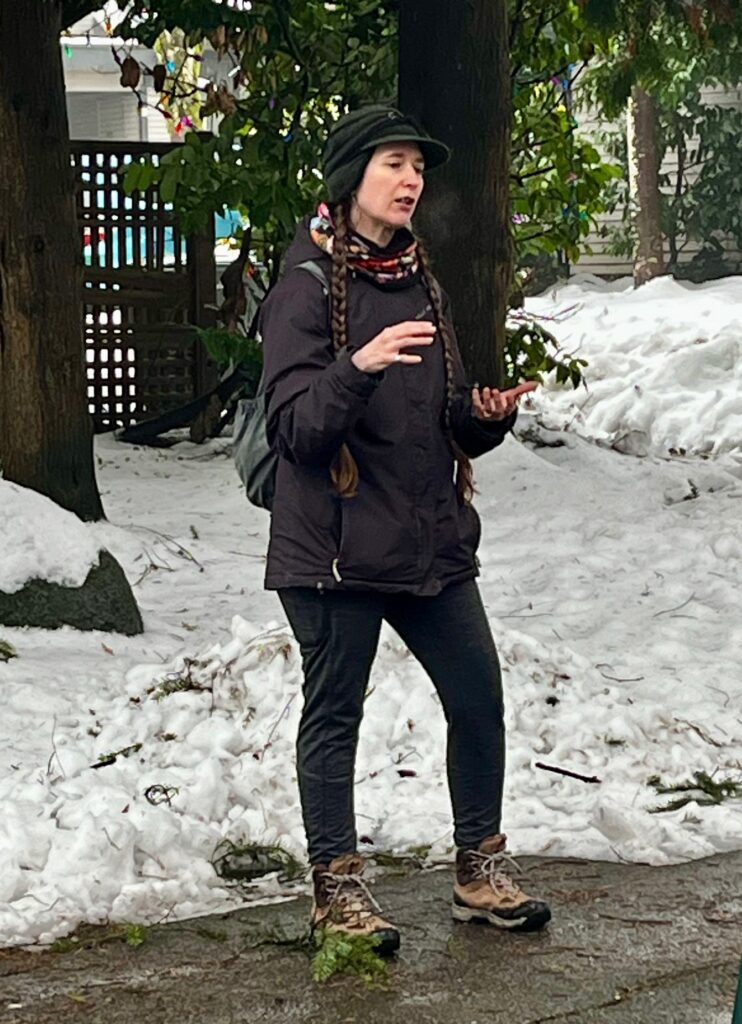
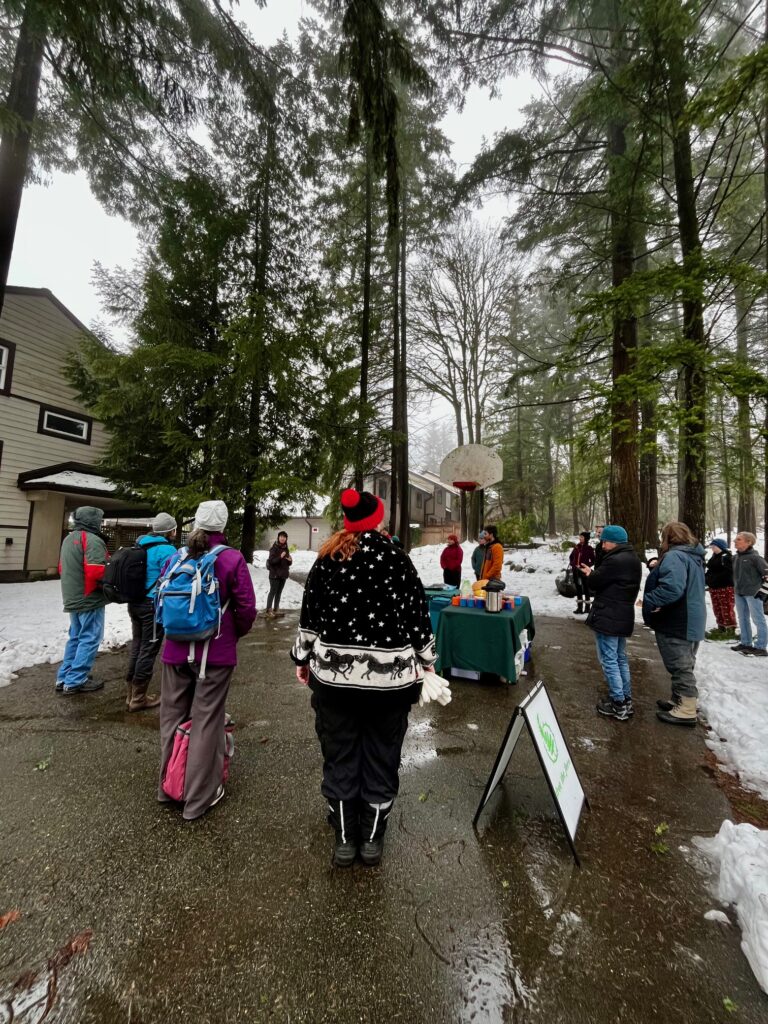
Julia began by passing out a visual reference for the parts of a branch. We learned that the top most bud on a branch is called an apical bud, and that it is covered in a hard bud scale that protects it like armour. When that bud scale falls off, the leaves and flowers are able to unfurl.
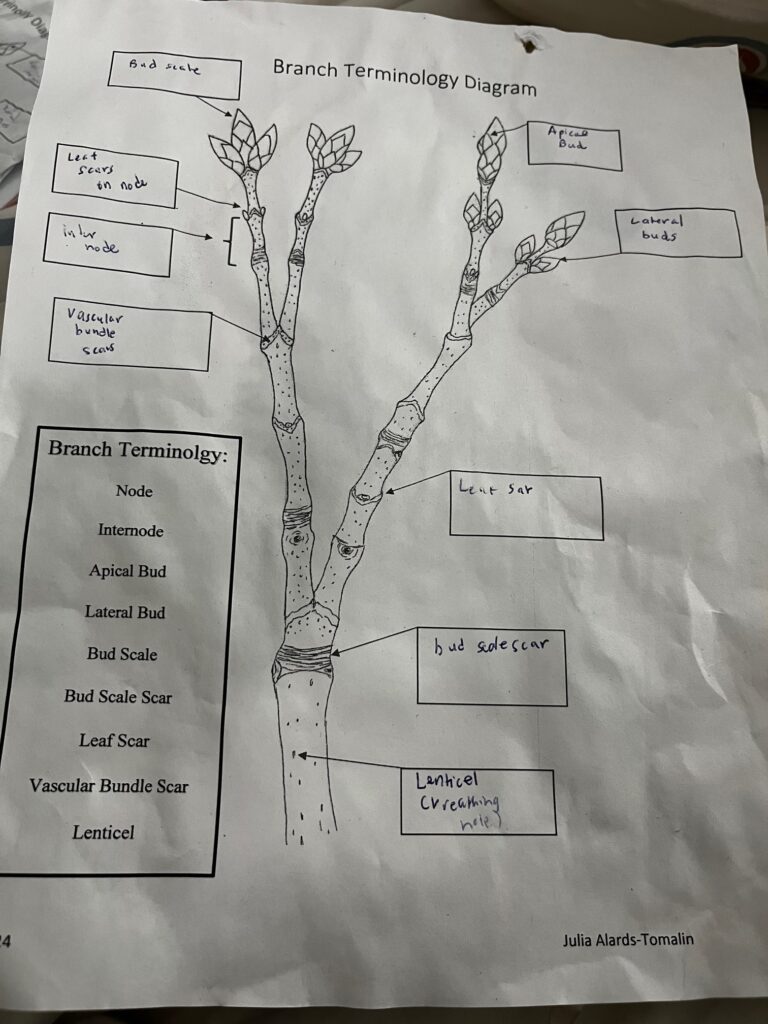
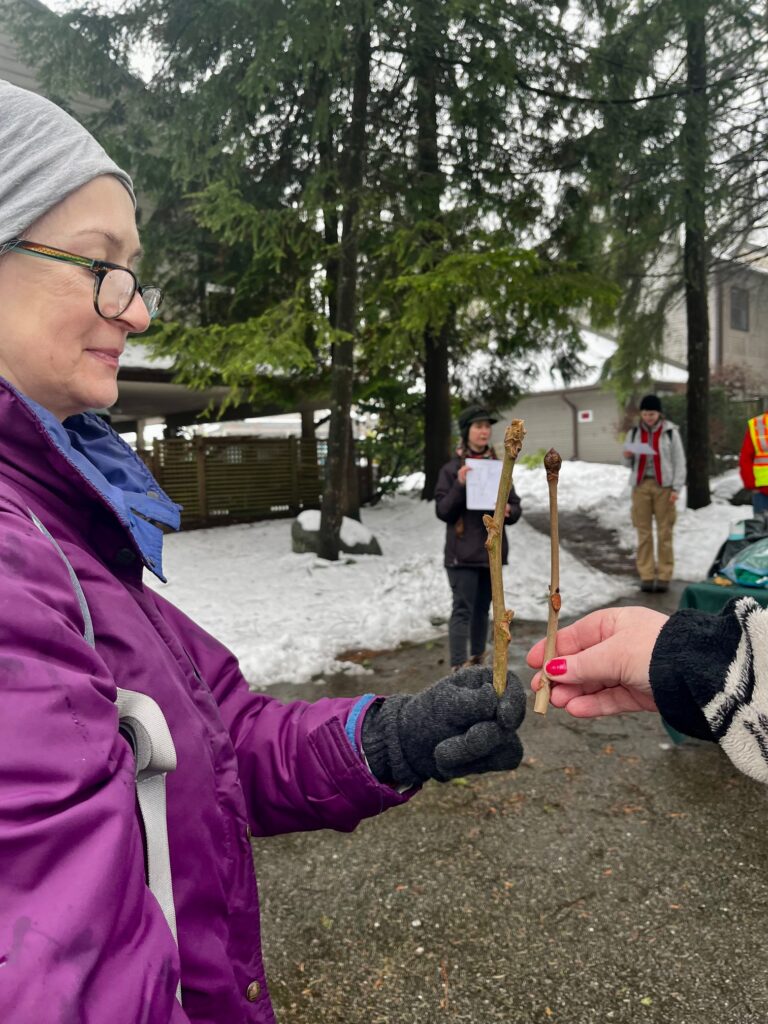
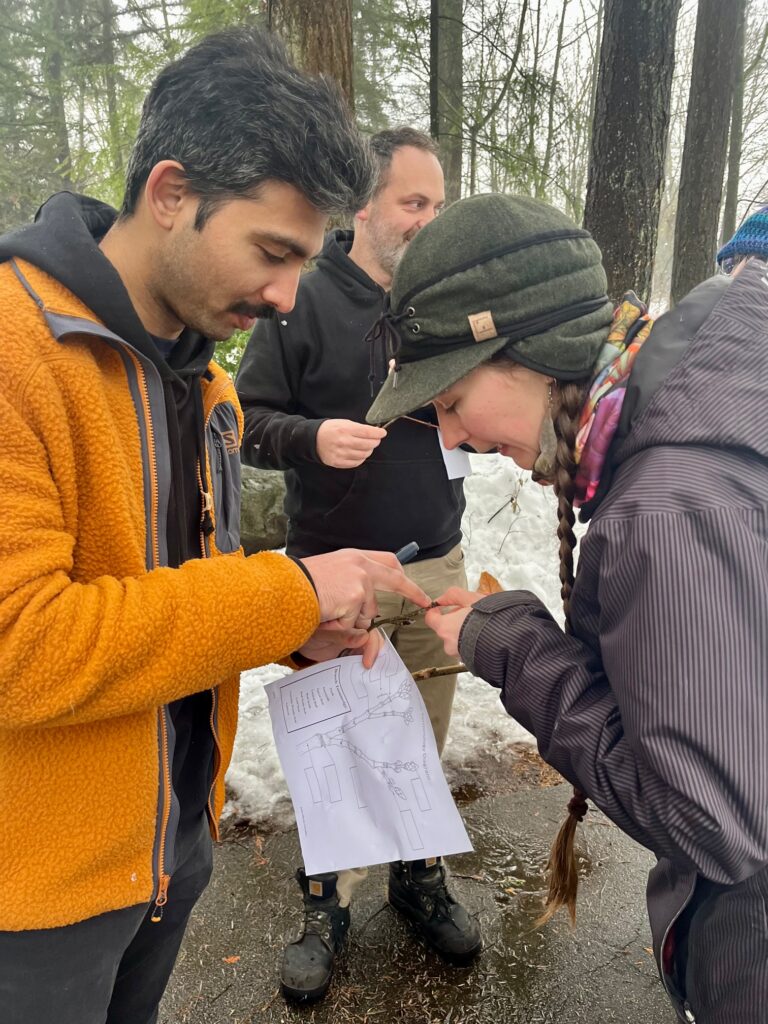
Plants grow from the tips of the branches out, so you can measure the growth of previous years by looking at the bud scale scar (rings on the stem where the previous year’s bud grew) and the current bud. Also a tree branch breathes through tiny holes, called lenticel, in its bark. Cool!
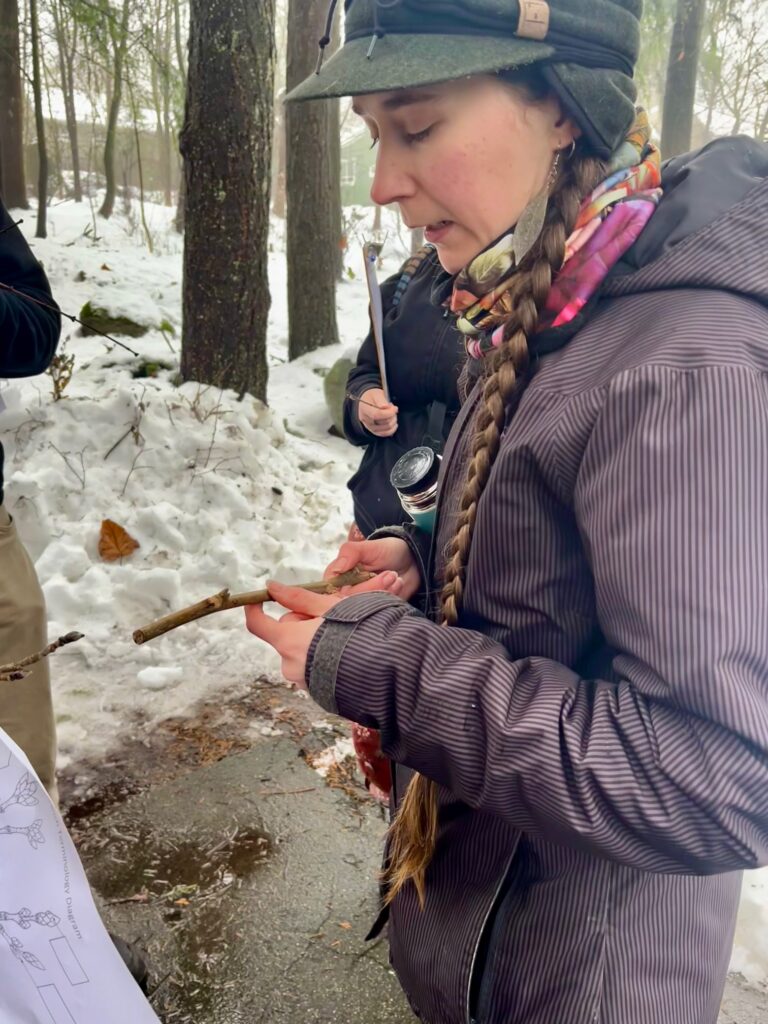
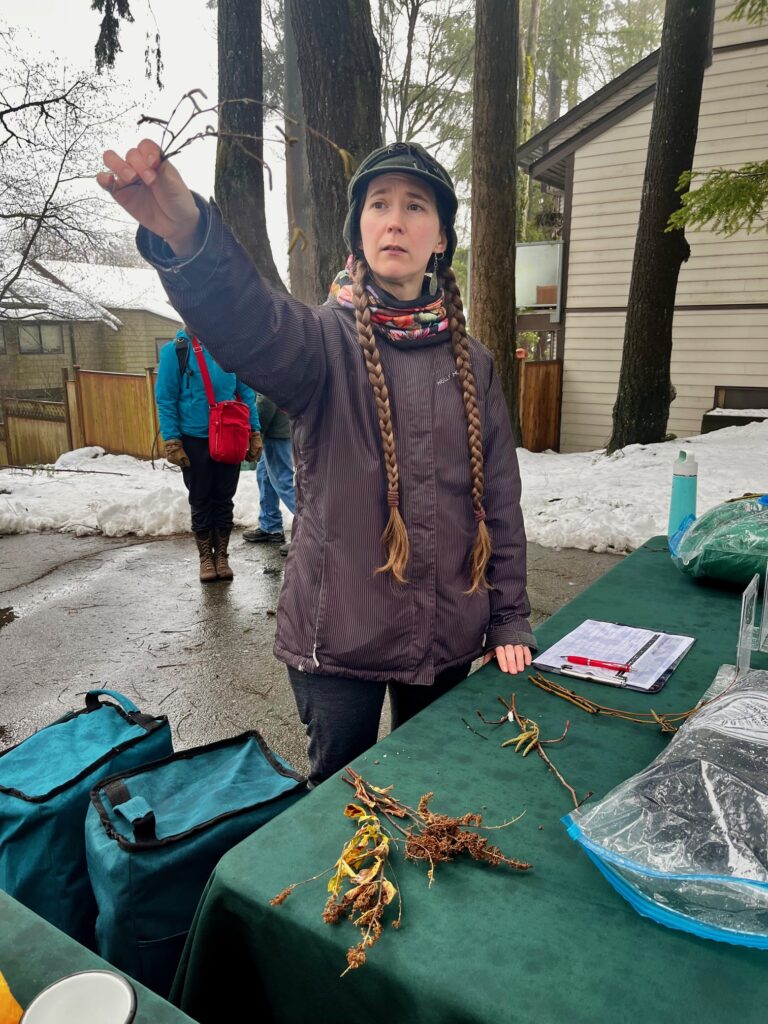
When leaves fall off a branch, they leave small, horseshoe-shaped leaf scars. If you look really close on those leaf scars you can even see tiny dots where the leaf veins once connected (known as vascular bundle scars). Who knew looking at a branch could be so fascinating?!
After examining branches up close, we decided to head out for our walk to see trees and shrubs along the trail. Julia led the way as we walked down the trail. She provided tips for identifying Red Alder, Big leaf Maple, snowberry, oceanspray, and osoberry.
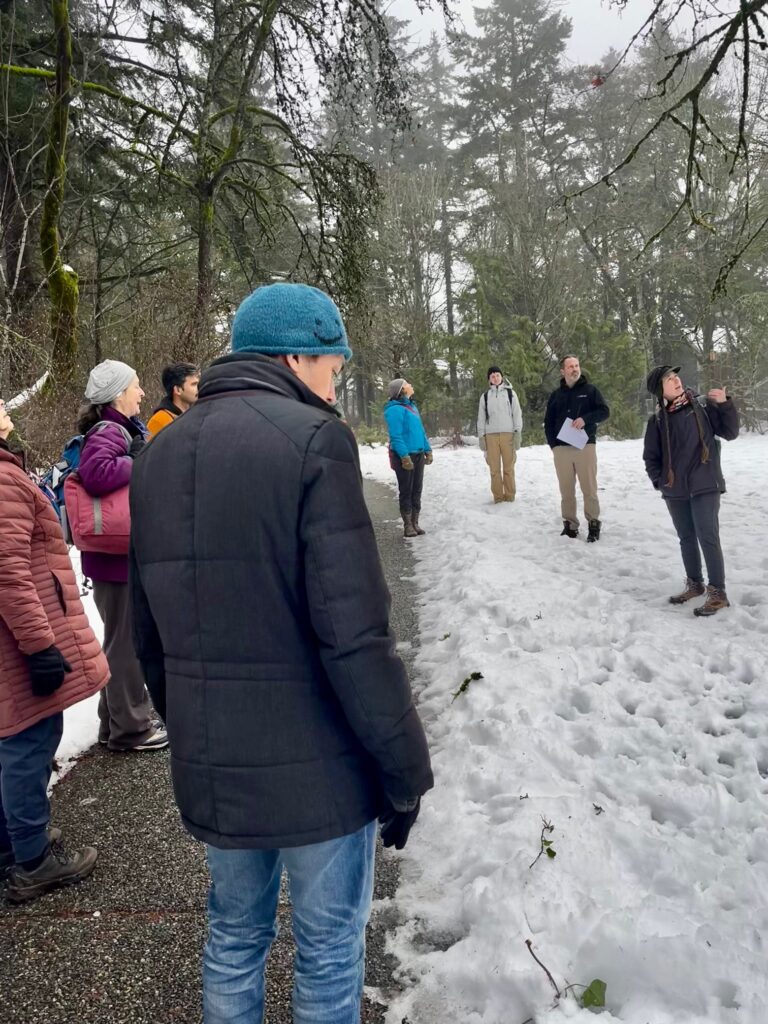
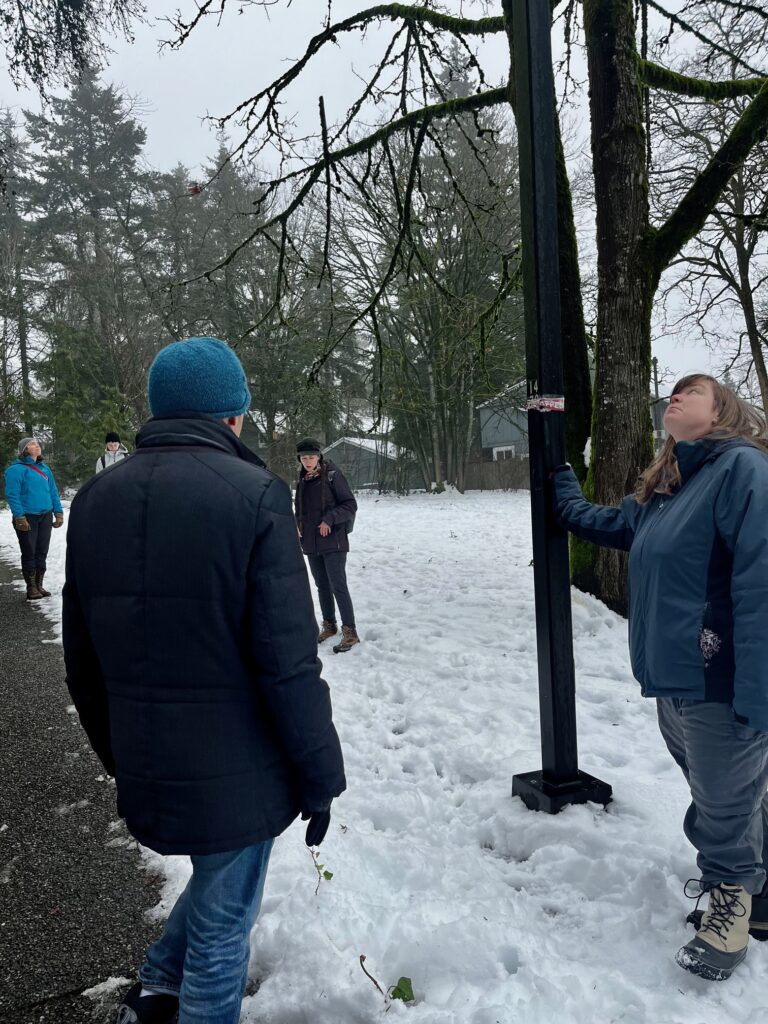
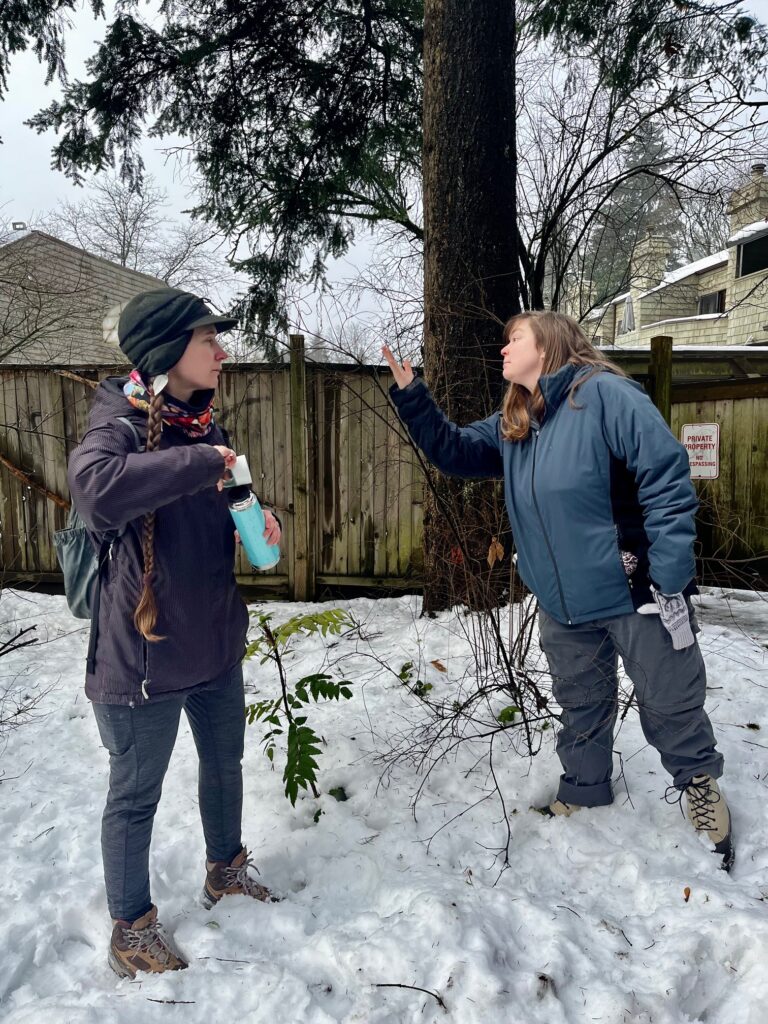
We had a surprise visit by a red breasted sapsucker who was pecking at a Big leaf maple tree just above us.
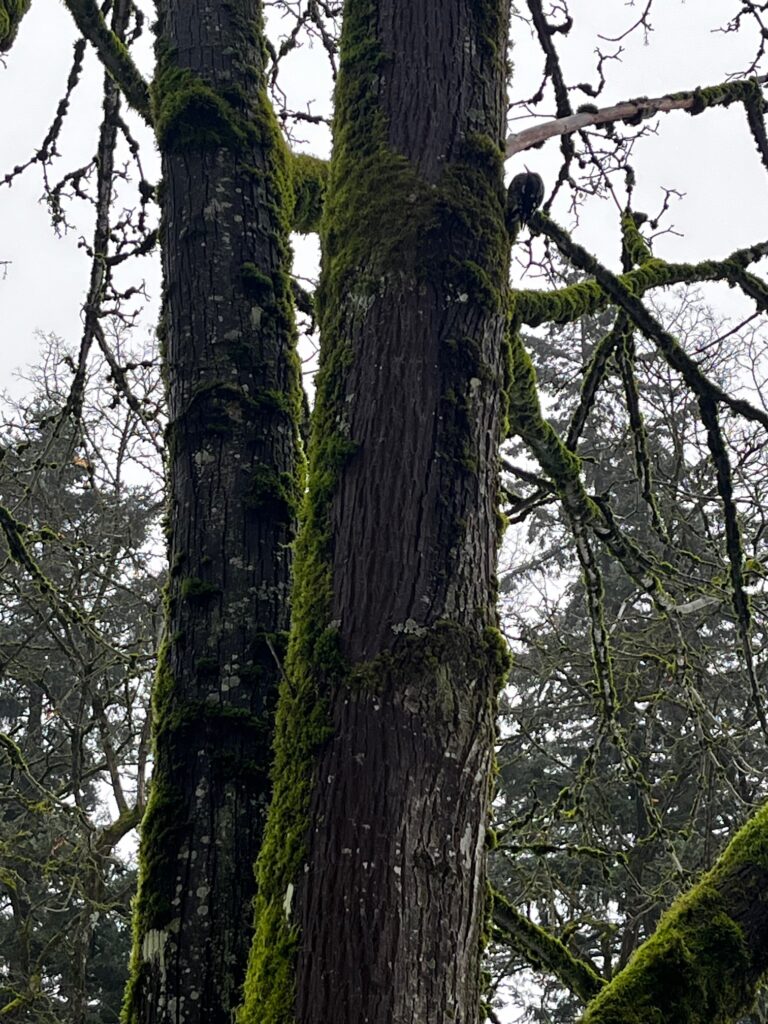
In addition, we were surprised by a plump grey squirrel who ended up breaking a branch and falling to the snowbank (don’t worry, he was back up and climbing the tree a moment later). We concluded our walk with some wonderful hot tea and snacks.
Thanks so much to Julia for sharing all your incredible knowledge with us!! You have opened our eyes to a whole new way of looking at plants in Winter.
This walk was made possible thanks to support from Park People through their Cornerstone Parks program.